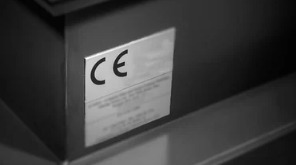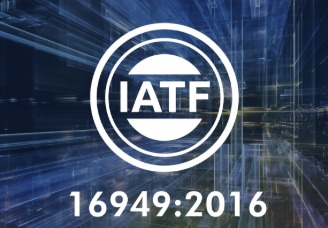CE Mark Certification: Gateway to the European Market
Introduction
In the competitive world of global trade, product compliance and safety have become essential for businesses that aim to enter international markets. One of the most recognized compliance marks in the world is the CE Marking. The CE mark is a certification symbol that indicates a product’s conformity with the European Union (EU) health, safety, and environmental protection standards. It acts as a passport for manufacturers and exporters who wish to sell their products within the European Economic Area (EEA).
This blog explores what CE Marking is, why it is important, the process for obtaining it, and how it benefits organizations looking to expand their market presence in Europe.
What is CE Marking?
CE stands for Conformité Européenne, which translates to “European Conformity.” The CE mark signifies that a product complies with all relevant EU directives and regulations. Once affixed, the CE mark allows the free movement of goods across all member states of the EEA, including EU countries as well as Iceland, Liechtenstein, and Norway.
CE marking applies to a wide range of products, including but not limited to:
-
Electrical and electronic equipment
-
Machinery and mechanical devices
-
Medical devices
-
Toys and child care products
-
Construction materials
-
Personal protective equipment (PPE)
-
Pressure equipment and gas appliances
By displaying the CE mark, manufacturers declare that their products meet the essential requirements of EU directives, which cover safety, health, environmental, and consumer protection aspects.
Importance of CE Mark Certification
CE Marking is not merely a legal obligation—it is a symbol of trust, quality, and market access. Here are some of the key reasons why it is vital for manufacturers and exporters:
1. Market Access to the European Union
Without the CE mark, your product cannot legally be sold in the EU or EEA. CE certification acts as an entry ticket to one of the largest and most lucrative markets in the world.
2. Consumer Confidence and Product Credibility
The CE mark enhances product credibility by showing consumers that your product has been designed and manufactured in compliance with stringent EU standards. It assures users of safety and reliability.
3. Legal Compliance and Risk Reduction
By obtaining CE certification, businesses demonstrate legal compliance, which helps avoid penalties, recalls, or restrictions on selling their products in European markets. It also minimizes liability in the event of product failures or accidents.
4. Competitive Advantage
Products bearing the CE mark stand out in the global market as they meet high-quality standards. It helps build brand reputation and trust among distributors and customers.
5. Global Recognition
Although CE marking is specific to the European market, it is widely recognized worldwide as a sign of safety and quality. It enhances your product’s appeal even in non-European markets.
CE Marking Directives and Regulations
The European Union has issued several directives that specify the requirements for different product categories. Some of the most common CE directives include:
-
Low Voltage Directive (LVD) – for electrical equipment operating between 50 and 1000 V AC or 75 and 1500 V DC
-
Electromagnetic Compatibility (EMC) Directive – for devices that may generate or be affected by electromagnetic interference
-
Machinery Directive – for mechanical equipment and industrial machinery
-
Medical Devices Regulation (MDR) – for all types of medical equipment and instruments
-
Toys Safety Directive – for toys and products intended for children
-
Personal Protective Equipment (PPE) Regulation – for safety and protective gear
-
Construction Products Regulation (CPR) – for materials used in building and construction
Each directive defines the essential requirements, conformity assessment procedures, and applicable harmonized standards.
Steps to Obtain CE Mark Certification
The CE marking process involves several structured steps to ensure product compliance. Here’s a general outline of how the certification process works:
Step 1: Identify Applicable EU Directives and Standards
Determine which EU directives or regulations apply to your product. Each product may fall under one or multiple directives depending on its type and intended use.
Step 2: Assess Product Requirements
Understand the essential requirements and harmonized standards relevant to your product. Compliance with these standards simplifies the assessment process.
Step 3: Conduct a Conformity Assessment
Perform the conformity assessment either internally or through a Notified Body, depending on the risk category of the product. Low-risk products can often be self-declared, while high-risk products require third-party testing and certification.
Step 4: Technical Documentation
Prepare a Technical File that contains evidence of compliance, such as design drawings, test reports, risk analysis, quality control procedures, and user manuals. This documentation must be kept for at least 10 years after the product is placed on the market.
Step 5: Declaration of Conformity (DoC)
Draft and sign the EU Declaration of Conformity, stating that your product meets all applicable directives and standards. This declaration must include the manufacturer’s details, product information, directives complied with, and the signature of the responsible person.
Step 6: Affix the CE Mark
Once all requirements are fulfilled, the CE mark can be affixed to the product, packaging, or user manual. The mark should be visible, legible, and indelible.
Role of Notified Bodies in CE Certification
A Notified Body is an independent, accredited organization designated by the EU to assess product conformity with relevant directives. Their involvement is mandatory for certain product categories, especially high-risk items like medical devices, pressure equipment, or machinery.
The Notified Body conducts testing, audits, and product inspections, ensuring compliance before issuing the certification. Choosing an experienced and accredited Notified Body is crucial for ensuring smooth certification and market approval.
Benefits of CE Mark Certification for Manufacturers
Achieving CE certification offers numerous benefits beyond compliance:
-
Market expansion across 30+ European countries
-
Enhanced brand value through recognized quality standards
-
Reduced risk of trade barriers or customs issues
-
Improved product safety and customer satisfaction
-
Increased business opportunities with European distributors and clients
CE marking also demonstrates a manufacturer’s commitment to continuous improvement, aligning with quality management practices such as ISO 9001.
Challenges in CE Certification
While CE marking provides immense advantages, the process can also be challenging due to:
-
Complex documentation and regulatory requirements
-
Multiple directives applicable to a single product
-
Frequent updates in EU legislation
-
The need for specialized testing and third-party evaluation
Partnering with a professional certification consultant or body can simplify the process, ensuring full compliance and quicker access to the European market.
Conclusion
The CE Mark Certification is more than a compliance mark—it is a symbol of quality, safety, and reliability. For manufacturers and exporters, it opens the door to the European market and establishes trust among customers worldwide. Although the process requires technical precision and regulatory understanding, the benefits in terms of market expansion, customer confidence, and brand reputation make it a valuable investment.
Whether you are a small manufacturer or a global brand, obtaining CE certification demonstrates your commitment to safety, quality, and customer satisfaction. In an era of global trade and strict regulatory oversight, CE Marking is your passport to European success.







